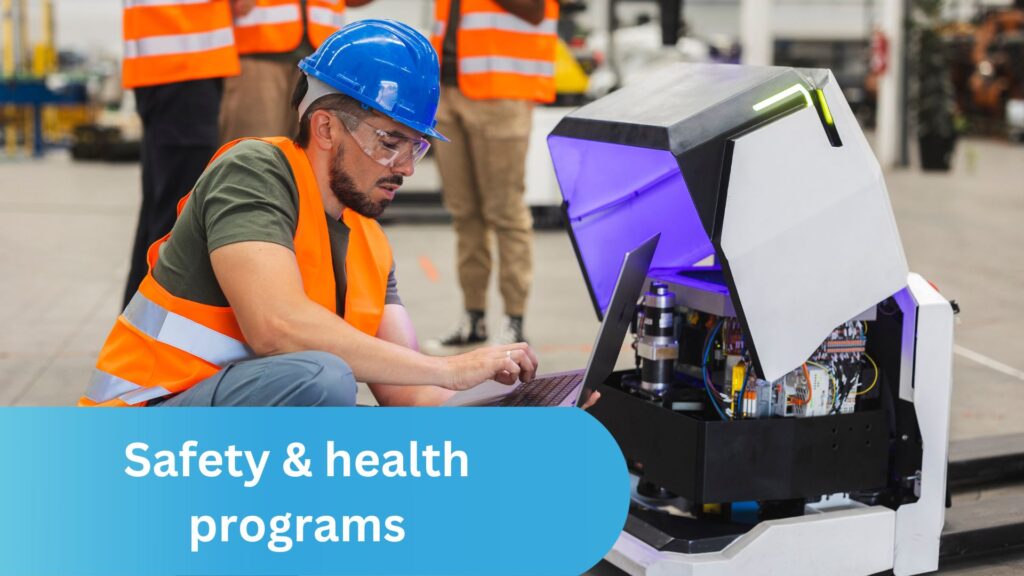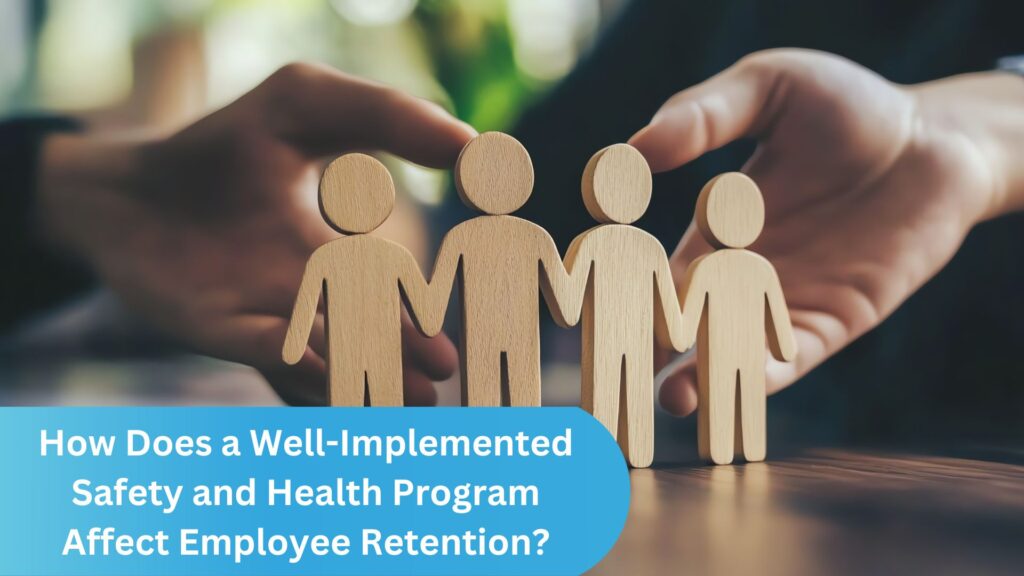Employee retention is one of the costliest and hardest problems companies face. Turnover hits the bottom line directly (recruiting, training, lost productivity) and indirectly (lower morale, weaker customer service).
Investing in a robust safety and health program is one of the highest-ROI ways to reduce turnover because it addresses both physical risk and the psychological experience of work.
Hard numbers that matter
-
Workplaces that adopt formal safety and health management systems can cut injury- and illness-related costs by roughly 20–40%, lowering workers’ compensation and related costs.
-
OSHA’s Voluntary Protection Programs (VPP) sites — companies with mature safety systems — have injury rates (DART) about 52% below industry averages, illustrating how systematic safety work reduces serious incidents.
-
Employee turnover also has a measurable price tag: multiple reviews put the cost to replace a typical employee at roughly 16–40% of annual pay, depending on role and seniority — meaning reducing turnover by even a few percentage points saves real money.
Those three data points are the business case: fewer injuries → fewer direct costs and fewer disruptions → better employee experience → lower voluntary turnover.
How safety & health programs actually improve retention

A well-implemented program works on several channels that drive people to stay:
-
Builds trust in leadership
When management visibly invests in safety (training, PPE, staffing, maintenance), employees interpret that as “the company cares about me.” That trust reduces the desire to look for other employers. Research links strong safety climate with higher job satisfaction and lower turnover intentions. -
Reduces stress and uncertainty
Clear, practiced procedures for hazards, incidents, and emergencies reduce daily anxiety. Less stress means fewer burnout-driven exits. -
Lowers absenteeism & improves productivity
Fewer injuries and health problems mean fewer lost workdays and less presenteeism. OSHA and safety researchers show that prevention programs can dramatically reduce lost-time events. -
Improves workplace culture and engagement
Safety programs that include employee participation (safety committees, near-miss reporting, stop-work authority) increase voice and engagement — factors that predict retention. -
Strengthens employer brand and recruiting
A reputation for safety helps hire better candidates, and better hires tend to stay longer. Investors and customers are also paying more attention to EHS performance, reinforcing the business case. National Safety Council
What “well-implemented” looks like (concrete components)
A retention-boosting safety & health program is more than PPE and posters. Best practices include:
-
Active leadership commitment (visible, resourced, measurable).
-
Comprehensive hazard identification and risk control, not just incident response.
-
Regular, practical training and competency assessments for workers.
-
Employee involvement (safety teams, near-miss reporting, suggestion channels).
-
Return-to-work and light-duty programs that support injured workers coming back.
-
Ergonomics and preventive health (e.g., safe patient-handling in healthcare) that reduce chronic injury risk.
-
Mental health and Total Worker Health approaches that integrate well-being and safety.
KPIs to measure whether safety investment is improving retention

To prove causality (safety → retention), track both safety and people metrics together:
Lagging (traditional) safety KPIs
-
TRIR (Total Recordable Incident Rate)
-
DART (Days Away, Restricted, Transferred) rate
-
Lost work days / severity rate
-
Workers’ compensation costs (total & per claim)
Leading (predictive) safety KPIs
-
% of completed safety observations / audits
-
Near-miss reports submitted / corrective actions closed
-
Safety training completion & competency rates
-
Safety suggestion participation rates
People & retention KPIs
-
Voluntary turnover rate (overall and by job/department)
-
Time-to-fill and cost-to-fill open roles
-
Absenteeism rate and average sick days per employee
-
Employee engagement / safety climate survey scores
-
New hire 90-day retention / turnover
Tracking trends (e.g., improved leading indicators → lower TRIR/DART → lower voluntary turnover) helps quantify ROI.
Quick ROI sketch (example)
-
If replacing a frontline worker costs ~20% of annual salary (Center for American Progress), and a safety program reduces turnover by 5 percentage points across a 200-person operation, the avoided replacement cost alone can justify program investment — before counting reduced workers’ comp and productivity gains.
Real evidence & recent reviews
Recent industry reviews and academic research consistently show a negative relationship between positive safety climate / strong OHS practices and turnover intentions — that is, better safety → lower desire to quit. The Campbell Institute and peer-reviewed studies summarize and confirm this link across sectors.
Practical next steps for employers (to translate safety into retention)
-
Benchmark: Run a baseline — TRIR/DART + voluntary turnover + engagement scores.
-
Start with quick wins: fix known hazards, improve PPE, run toolbox talks, set up near-miss reporting.
-
Invest in people: training, supervisor coaching, return-to-work programs, and mental health supports.
-
Measure & communicate: publish safety metrics and quarterly progress to employees — transparency builds trust.
-
Link EHS to HR outcomes: ask HR to model retention gains from safety improvements and include EHS KPIs in leadership scorecards.
Retention With vs. Without Safety Programs
Studies show that companies with strong health and safety programs see measurable differences in retention, absenteeism, and overall costs compared to those without structured programs.
| Factor | Companies With Safety Programs | Companies Without Safety Programs |
|---|---|---|
| Annual Employee Turnover | 15–20% | 30–40%+ |
| Absenteeism (Average Days per Employee) | 3–5 days | 7–10 days |
| Workplace Injury & Illness Costs | Reduced by 20–40% (OSHA data) | Higher costs due to claims & lost productivity |
| Employee Satisfaction / Engagement | High (workers feel valued and safe) | Lower (workers feel replaceable or at risk) |
| Employer Brand & Talent Attraction | Seen as a safe, supportive workplace | Struggles to attract and retain skilled workers |
Real-World Impact
According to OSHA, businesses that adopt comprehensive health and safety programs can cut injury and illness-related costs by 20–40% — a massive savings considering that U.S. employers spend billions annually on workplace injuries, workers’ compensation, and lost productivity. But the impact doesn’t stop at financial savings.
Companies with visible, well-structured safety initiatives consistently see:
-
Higher Employee Satisfaction – Workers who feel protected are more engaged, less stressed, and more likely to recommend their employer.
-
Lower Absenteeism – Fewer injuries and illnesses mean fewer sick days, which translates to more stable operations and reduced overtime costs.
-
Stronger Retention Rates – Employees who believe their company values their well-being are less likely to leave for competitors, even when offered slightly higher pay.
-
Better Recruitment Outcomes – A reputation for workplace safety makes employers more attractive to job seekers, especially in industries like manufacturing, construction, and logistics where safety is a top concern.
-
Improved Productivity & Morale – Safe environments reduce distractions and fears, enabling employees to focus on quality work.
For example, organizations that participate in OSHA’s Voluntary Protection Programs (VPP) — which recognize excellence in workplace health and safety — often report injury rates at half the industry average, while also enjoying higher employee retention and satisfaction.
Key Takeaway
A well-implemented safety and health program goes far beyond regulatory compliance — it’s a strategic advantage. Companies that prioritize both physical and mental well-being foster a culture of trust, loyalty, and stability. This directly improves retention, lowers turnover costs, and strengthens the employer brand.
In a competitive labor market, where retaining skilled employees is just as important as recruiting them, investing in safety isn’t just the right thing to do — it’s one of the smartest business moves an organization can make.


